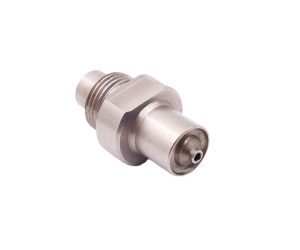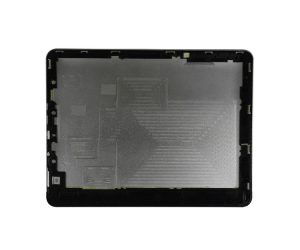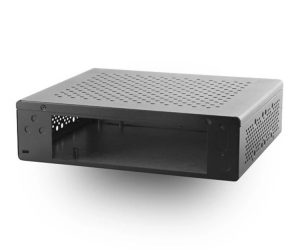Plastic part tolerance standards are essential to the integrity and success of modern manufacturing. They provide the framework for ensuring that parts are produced with precision, functionality, and consistency. As industries continue to push for tighter tolerances and more
Introduction
In the world of modern manufacturing, plastic part tolerance standards are foundational to ensuring that products meet the highest levels of precision, functionality, and quality. These standards serve as the benchmarks that guide manufacturers in controlling the allowable deviations in a part's dimensions and physical attributes. Without precise tolerance standards, products could suffer from misfits, failures, and inefficiencies. As we delve into this vital aspect of manufacturing, we explore how these standards affect design, production, and product performance across diverse industries.
What are Plastic Part Tolerance Standards?
Plastic part tolerance standards define the acceptable ranges of dimensional variation for plastic components. These standards specify the extent to which the dimensions of a part—such as length, width, thickness, and angularity—can deviate from the nominal or desired values without affecting the part's function or performance. These permissible variations, typically expressed in millimeters or microns, ensure that parts fit together properly in an assembly and perform as expected in their respective applications. Tolerance standards play a crucial role in the design and manufacturing of plastic parts, bridging the gap between conceptual designs and practical, manufacturable products.
Importance of Adhering to Tolerance Standards
Adhering to plastic part tolerance standards is vital for several reasons:
- Ensures Functionality: Components that deviate too much from the specified tolerances may fail to function properly, affecting the performance of the final product.
- Maintains Consistency: Tolerance standards ensure that products remain consistent across production runs, crucial for mass production where high volume, uniformity, and quality are critical.
- Cost Efficiency: By following standard tolerances, manufacturers reduce the risk of defects and the need for costly rework or scrap.
- Enhances Reliability: Components made within precise tolerances are less likely to encounter failures during use, ensuring a longer product lifespan and better customer satisfaction.
Design Considerations and Tolerances
Designing a plastic part is not merely an aesthetic or creative exercise; it requires careful consideration of manufacturability. Tolerance standards are essential during the design phase because they define the limits within which a part can be made without compromising its functional or aesthetic properties. Designers must balance factors such as:
- Part geometry: More intricate shapes often require tighter tolerances.
- Material behavior: Different plastics have varying shrinkage rates, thermal expansion, and elasticity, which impact tolerances.
- Manufacturing process: Processes like injection molding may have inherent limitations in terms of how tightly dimensions can be controlled, while CNC machining can often achieve more precise tolerances.
Understanding these constraints allows designers to create parts that are both innovative and feasible to manufacture.
Role in Manufacturing Processes
Tolerance standards guide the entire manufacturing process. The quality of the manufacturing process directly affects how well the final product matches the designed tolerances. In injection molding, for example, the process parameters—such as injection pressure, temperature, and cooling time—must be optimized to ensure that parts are produced within the specified tolerances. Tolerance standards impact several key manufacturing considerations:
- Mold Design: Properly designing molds to ensure consistent and accurate part dimensions across all parts in a production run.
- Process Control: Tight tolerances may require more precise control over injection speeds and temperatures.
- Quality Assurance: Tolerance standards establish the criteria for measuring parts and validating that they meet quality requirements.
By following these standards, manufacturers can achieve higher yields, reduced defects, and improved efficiency, all of which contribute to better overall product quality.
Types of Tolerance Standards
Plastic part tolerance standards are multifaceted and encompass various types of tolerances to ensure comprehensive control over part dimensions and attributes. Some of the most common types include:
- Dimensional Tolerances: These specify the permissible variation in linear dimensions, such as length, width, and height. For example, a part might have a specified tolerance of ±0.2mm for length, meaning that the part can be 0.2mm shorter or longer than the intended length without impacting its functionality.
- Geometric Tolerances: These cover variations in the shape and orientation of parts, such as roundness, flatness, and angularity. Geometric dimensioning and tolerancing (GD&T) is commonly used in more complex parts where precise control over the geometry is required. For instance, a hole in a part might need to be round within a certain tolerance to ensure it fits properly with another component.
- Surface Finish Tolerances: These refer to the roughness or smoothness of a surface. A smoother surface finish might be required in areas where friction or aesthetic appearance is important, like in consumer electronics or automotive parts.
- Fit Tolerances: These are related to how parts fit together, such as whether two components fit tightly or loosely. This is especially critical for parts that must interlock or mate with other parts, like in assembly line processes.
Factors Affecting Tolerances
Several factors influence the achievable tolerances for plastic parts, and they must be considered when establishing the required standards:
- Material Properties: Each plastic material has different behaviors during processing. Materials like ABS or polycarbonate may have different shrinkage rates and thermal expansion coefficients, which affect how tightly a part can be manufactured.
- Molding Process: The precision of the molding process itself plays a critical role. Injection molding, for example, is often limited by the machine's precision and the complexity of the mold. Parts with intricate designs may require more precise control over the injection process.
- Environmental Conditions: Variations in temperature, humidity, and other environmental factors during production can influence material properties and part dimensions. This is especially important for industries with strict requirements like aerospace or automotive.
- Manufacturing Equipment: The accuracy of the machinery used—whether injection molding machines, CNC machines, or 3D printers—impacts the final part's tolerance. High-precision equipment allows for tighter tolerances but often comes with higher costs.
Industry-Specific Tolerance Practices
Different industries require different levels of precision based on the intended function and application of the plastic part. Some of the key sectors with specific tolerance requirements include:
- Automotive Industry: Automotive parts often require very tight tolerances due to the need for components to fit precisely and function reliably in high-stakes environments. Components such as engine parts, transmission systems, and body panels need to adhere to strict tolerances to ensure safety and performance.
- Aerospace Industry: Aerospace components are subjected to extreme stresses, requiring even more stringent tolerances. Tolerances in the aerospace sector often reach ±0.05 mm or even tighter for critical parts that affect aircraft performance, safety, and fuel efficiency.
- Electronics Industry: In electronics, tolerances are critical for components like connectors, circuit boards, and casings. Precision is needed to ensure components fit together and operate without electrical failure or performance degradation.
- Medical Devices: For medical devices, tolerances are crucial for functionality and patient safety. Parts like prosthetics, surgical tools, and drug delivery devices must be produced within stringent tolerances to avoid malfunctions that could compromise health.
Measurement and Verification
To ensure that a part meets the required tolerance standards, manufacturers rely on advanced measurement and verification techniques. These methods allow manufacturers to measure and assess parts with extreme precision:
- Coordinate Measuring Machines (CMM): These machines measure the physical geometry of a part and compare it to the desired specifications.
- Optical Measurement Systems: These systems use light to measure small parts or detailed features, offering high precision without the need for direct contact.
- Laser Scanning and 3D Imaging: These tools can capture the entire surface of a part and compare it to its CAD model, ensuring that all geometric tolerances are met.
By using these tools, manufacturers can detect deviations early in the production process, preventing defects and ensuring the highest quality parts.
Challenges and Solutions
While achieving precise tolerances is essential, it is not without its challenges:
- Material Variability: Different materials behave differently during processing, and even slight changes in material properties can impact tolerances.
- Complex Geometries: Parts with complex shapes or intricate features may be difficult to manufacture within tight tolerances, requiring advanced tooling or additional processing steps.
- Cost and Time Constraints: Tight tolerances can increase the cost and time needed to produce parts, making it challenging to balance precision with production efficiency.
Solutions:
- Advanced Manufacturing Techniques: Technologies like additive manufacturing (3D printing) and precision injection molding can improve tolerance control for complex geometries.
- Process Optimization: Advanced process control and automation, such as real-time monitoring during production, can help improve tolerance consistency.
- Material Selection: Using materials that are better suited for the desired tolerances can reduce variation during manufacturing.
Future Trends in Tolerance Standards
As manufacturing technology advances, tolerance standards are also evolving. Some key trends include:
- Automation and AI: Automation tools and AI-powered processes are helping to improve consistency and reduce errors in manufacturing, enabling tighter tolerances.
- Additive Manufacturing (3D Printing): With its ability to create complex shapes, 3D printing is pushing the boundaries of tolerance standards, especially in industries like aerospace and medical devices.
- Advanced Materials: New materials that offer more predictable behaviors during manufacturing are paving the way for more consistent production of high-precision plastic parts.




